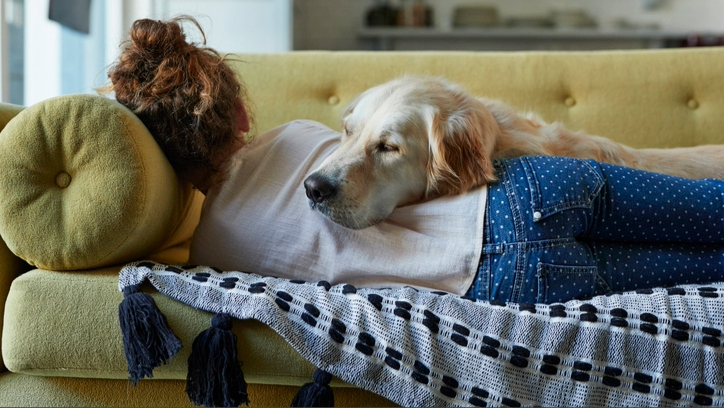I'm a mattress topper expert — here's everything I've learned about how to choose the right one
Here’s how to choose the right mattress topper for your bed, sleep position, and body type
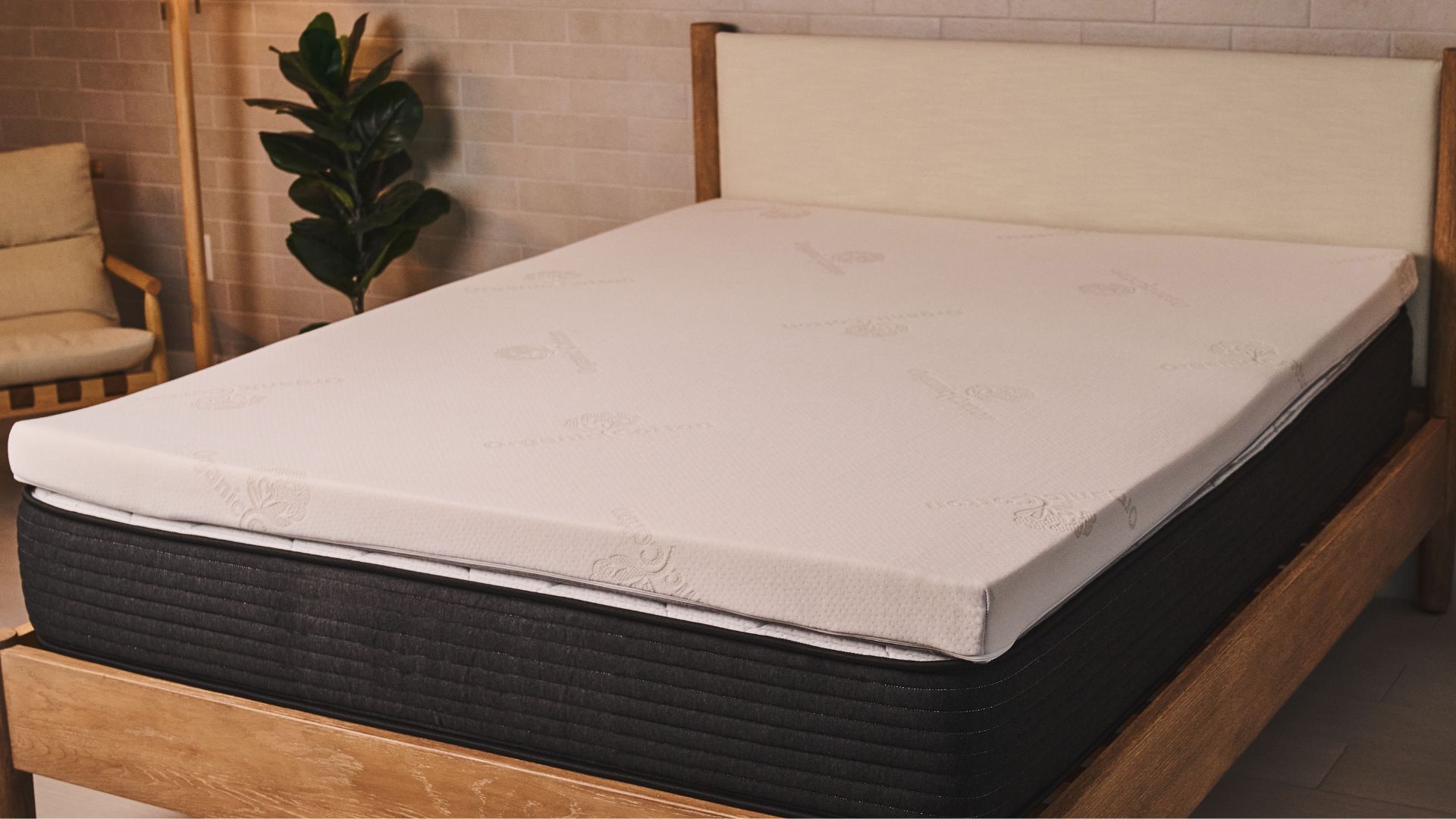
I've tested some of the highest-rated mattress toppers on the market, so I know how quickly and easily these underrated gems can transform your bed. Mattress toppers are also much cheaper than replacing your mattress, especially when they're frequently on sale. But with so many discounts to trawl through, it can be hard to know how to chose the right bed topper for your sleep.
This year's best mattresses can offer fantastic support and comfort for all sleepers, but investing in a new bed isn't always possible. Instead, the best mattress toppers are a cost-effective alternative if you don't have the budget for a new bed. That said, there are some premium bed toppers that cost more than budget and even mid-range mattresses, so price is important to consider when choosing a bed topper.
However, you shouldn't choose a mattress topper on price alone, as an ultra-cheap topper isn't always right for you or your bed. That's why I'm here to share my top tips for choosing bed toppers, covering everything from identifying stand-out price drops to picking topper material and height.
What is a mattress topper?
Before I share my best advice for choosing a mattress topper, let's cover the basics. A mattress topper is a thick, cushioning mat that is placed on top of a mattress's surface to adjust the way it feels. Depending on the type, a mattress topper can make a bed softer, firmer, cooler, or even cleaner.
Mattress toppers are often confused with mattress pads (and vice versa), but the two are completely different. While mattress pads are thin (usually around one inch high) and only provide an extra layer of quilted mattress protection, mattress toppers are usually two to four inches thick and alter the feel of your mattress while adding mattress protection simultaneously. So, if you're debating whether to buy a mattress pad vs mattress topper, the mattress topper wins if you actually want to make a significant difference to your bed.
Types of mattress toppers
Mattress toppers are available in many different materials and designs. Before I share my tips for choosing a mattress topper, here's a quick look at the most popular types:
1. Memory foam
This is undoubtedly the most popular type of mattress topper, and the kind that features most frequently in our guides to the best mattress toppers. Like the best memory foam mattresses, memory foam mattress toppers have an all-foam design that aims to provide a body-contouring hug for a plush or medium-firm feel.
This material will have a slow-moving, sink-in feel. They can be a great addition to beds that are too firm if you want to add some extra pressure relief.
2. Latex
The most eco-friendly and durable type of mattress topper, a latex bed topper, is made from natural latex foam. Latex mattress toppers tend to be made of Talalay latex rather than Dunlop latex (for more information on the difference, read our Dunlop vs Talalay latex guide), but either way, these hypoallergenic mattress toppers will provide a non-toxic, natural, and breathable sleep.
Latex has a different feel to memory foam, offering a more bouncy surface. Perfect for those who don't like the hugging sensation of memory foam.
3. Cooling gel
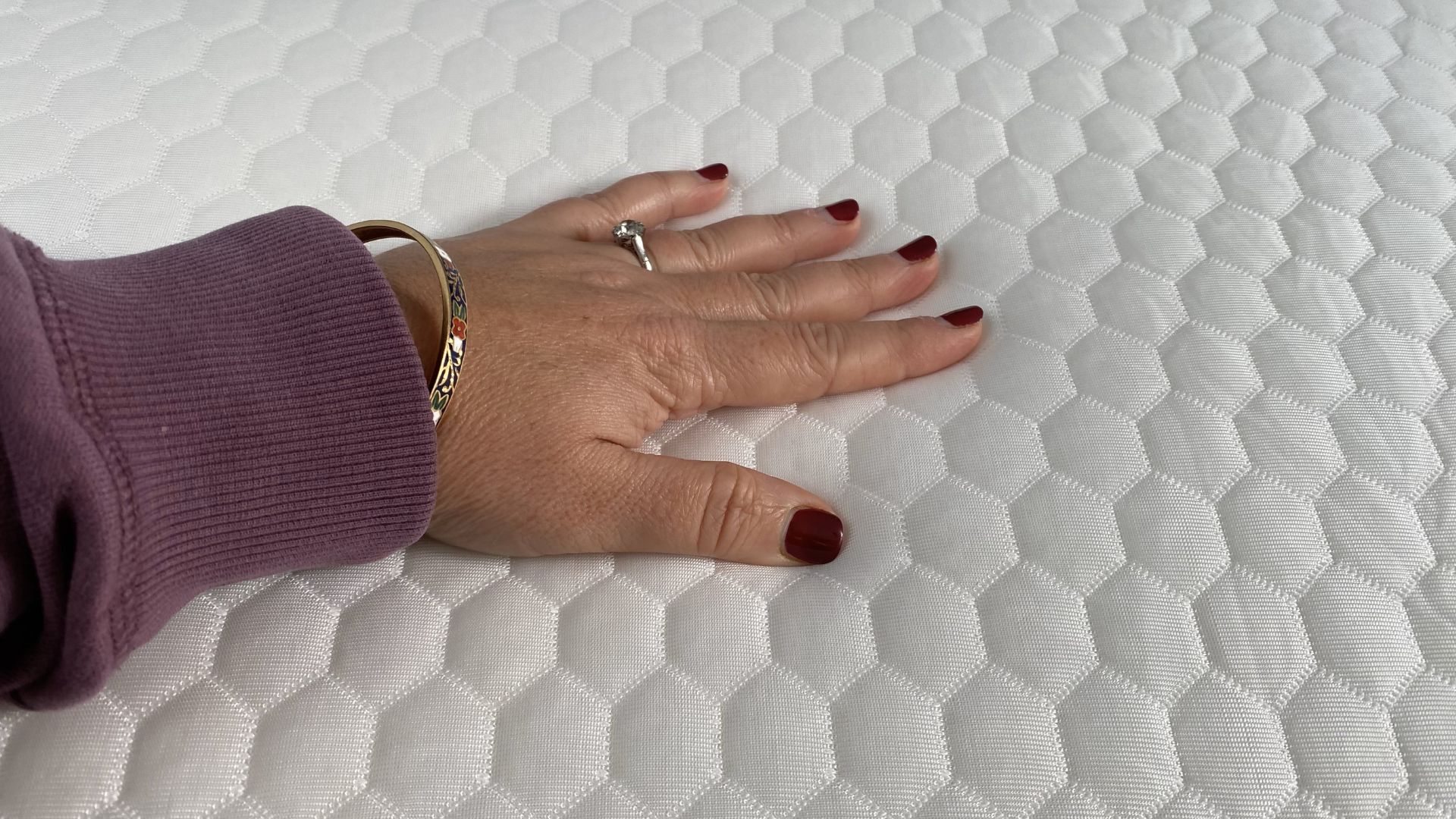
Cooling gel mattress toppers are a subtype of the memory foam topper. They are basically memory foam or all-foam mattress toppers that have been infused with heat-dissipating polymer gel. Sometimes, copper or graphite is added to the gel for extra temperature regulation and their antibacterial properties.
We'll often see this material incorporated into the best cooling mattresses. If you find your bed too hot, adding a cooling topper might be enough to help you regulate your temperature.
4. Down
I'll go in to more detail on this kind of topper later (if you want to even call it a topper), but these cheap bed toppers are quilted and filled with synthetic material.
They are also called microfiber, synthetic-filled, hollow fiber, or down alternative toppers, and feel more like a thin, bed-size pillow, rather than an extra layer of mattress.
5. Hybrid
Hybrid mattress toppers, like the best hybrid mattresses, combines two different topper materials to provide the benefits of both.
For example, you can get a hybrid mattress topper that has a thick foam base combined with down-alternative pillow top. Meanwhile, a new kind of hybrid mattress topper is the microcoil topper, which uses both foam and small, flexible coils to give a balance of comfort and support.
How to choose a mattress topper in 5 easy steps
1. Figure out what you and your bed needs
When choosing a mattress topper, the first thing to ask yourself is, "Why do I want to change or improve my bed?". Does your mattress feel too hard when you sleep on your side? Is it too soft and unsupportive, leading you to wake up with lower back pain? Is it starting to sag? Does it trap body heat to the point that you're waking up at night feeling hot and sweaty?
Whatever your issue is, use it as a starting point for choosing a mattress topper. After all, a mattress topper's main function is to improve a bed's drawbacks. Once you have figured out where your mattress is failing, jot down the following things:
- Your preferred sleep position(s)
- Your body type
- How old your mattress is
- Your budget
First of all, mattress toppers save you from splurging on a new mattress, so you'll need to find one that will suit your budget. I always reccomend buying the best that your money can buy as your sleep is one of the most important things to invest in.
Sleep position is important to consider when picking a mattress topper as different sleep styles need different firmness levels. For example, side sleepers need something soft and cushioning to relieve the pressure points (the body parts that come in contact with the mattress) in their shoulders, knees, and hips. Meanwhile, back and front sleepers need something firmer to keep their hips and lumbar region upright and prevent lower back pain.
If you like to sleep in two or more positions, choose a mattress topper based on your dominant position, or look for a medium-firm topper
Here's a quick guide to what each sleeper style needs:
Sleep position | Firmness of mattress topper |
|---|---|
Side sleepers | Need something soft to medium-firm to cushion shoulders, hips, and knees |
Back sleepers | Need something medium-firm to provide a balance of support and pressure relief |
Stomach sleepers | Need something firmer to support hips to prevent lower back pain |
Combination sleepers | Need something medium-firm with a responsive feel to make it easier to change positions |
As for body type, heavier bodies will need a firmer mattress topper while lighter bodies will need something softer. Here's what each weight category should look for when choosing a topper:
Weight category | Mattress topper firmness |
|---|---|
Under 130lbs | Plush for side sleepers; medium-firm for back and stomach sleeping |
130lbs to 230lbs | Choose based on your sleep position (use the table above) |
Over 230lbs | Medium-firm for side sleeping; Firm for back sleeping; Extra firm for back and stomach sleeping |
And then there's the matter of how old your mattress is. First of all, if your mattress is over 10 years old (and isn't made from durable latex), then it's most likely that you should look for a new mattress ASAP instead of a bed topper. However, if you're saving up for a new mattress and need a stopgap in the meantime, then choose one of the best cheap mattress toppers instead.
2. Choose a material
There are four main type of mattress topper material: memory foam, latex, wool, and down alternative.
Let me just say right off the bat, do not choose a down mattress topper. A down mattress topper (also known as a down alternative topper, a microfiber topper, a feather topper, or a pillow top mattress cover) are too thin to make any difference to a mattress and are nothing more than mattress pads that need to be replaced after a year or two.
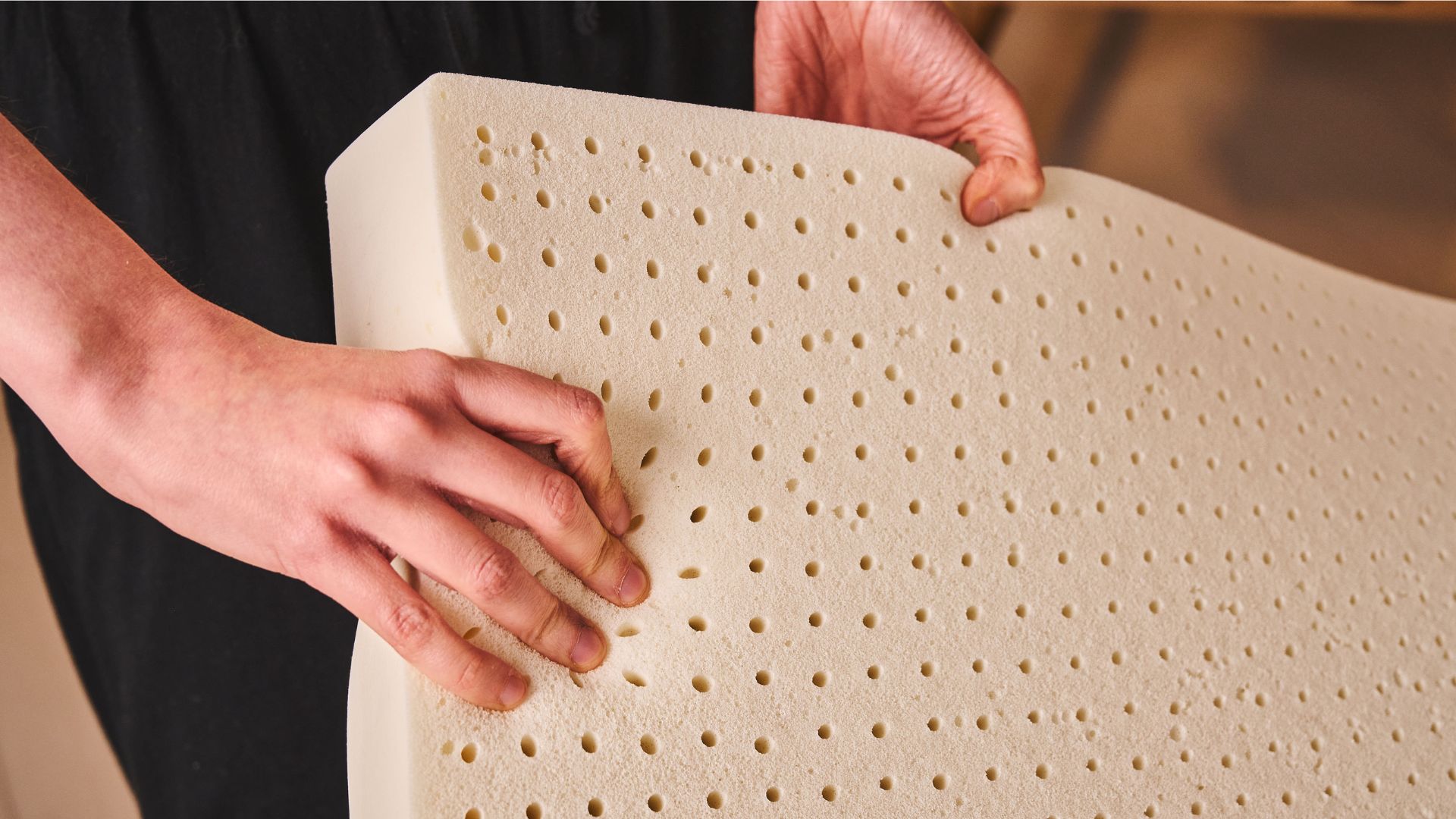
So, while retailers such as Amazon may be full to the brim with ridiculously cheap deals on down-alternative toppers, they're not worth it. How do I know? I bought a microfiber bed topper to soften up a firm mattress and it was a huge mistake as it didn't provide any pressure relief.
So that leaves us with latex, memory foam, and wool. Here's a rundown of the pros and cons of each material:
Material | Pros | Cons |
|---|---|---|
Memory foam | Popular; great motion isolation; provide excellent pressure relief (especially side sleepers); come in a range of designs; great for softening hard mattresses | Difficult to find a firm memory foam mattress topper for adding support to too-soft beds; can trap heat |
Latex | Eco-friendly; hypoallergenic; responsive for combination sleepers; non-toxic; naturally cooling, durable | Expensive; weak motion isolation; can lack pressure relief |
Wool | Incredibly durable; naturally breathable; hypoallergenic; natural | Weak motion isolation; expensive; not the best pressure relief |
Of course, you won't find all the pros and cons of each material in every mattress topper of that type. In fact, some have designs to counteract the material's drawbacks.
For example, while memory foam may trap heat, the best memory foam mattress toppers are equipped with cooling features such as copper-infused foam and a perforated design to boost airflow. You can also get hybrid mattress toppers, which feature both memory foam and microcoils (small, flexible springs) to boost all-foam topper's support and breathability.
3. Pick the right thickness
So, you've picked the topper material for your sleep need, but the material you choose won't matter unless you pick the right height. How thick your mattress topper is can completely change the amount of comfort and support it offers, so choose the topper's depth based on what you and your bed needs.
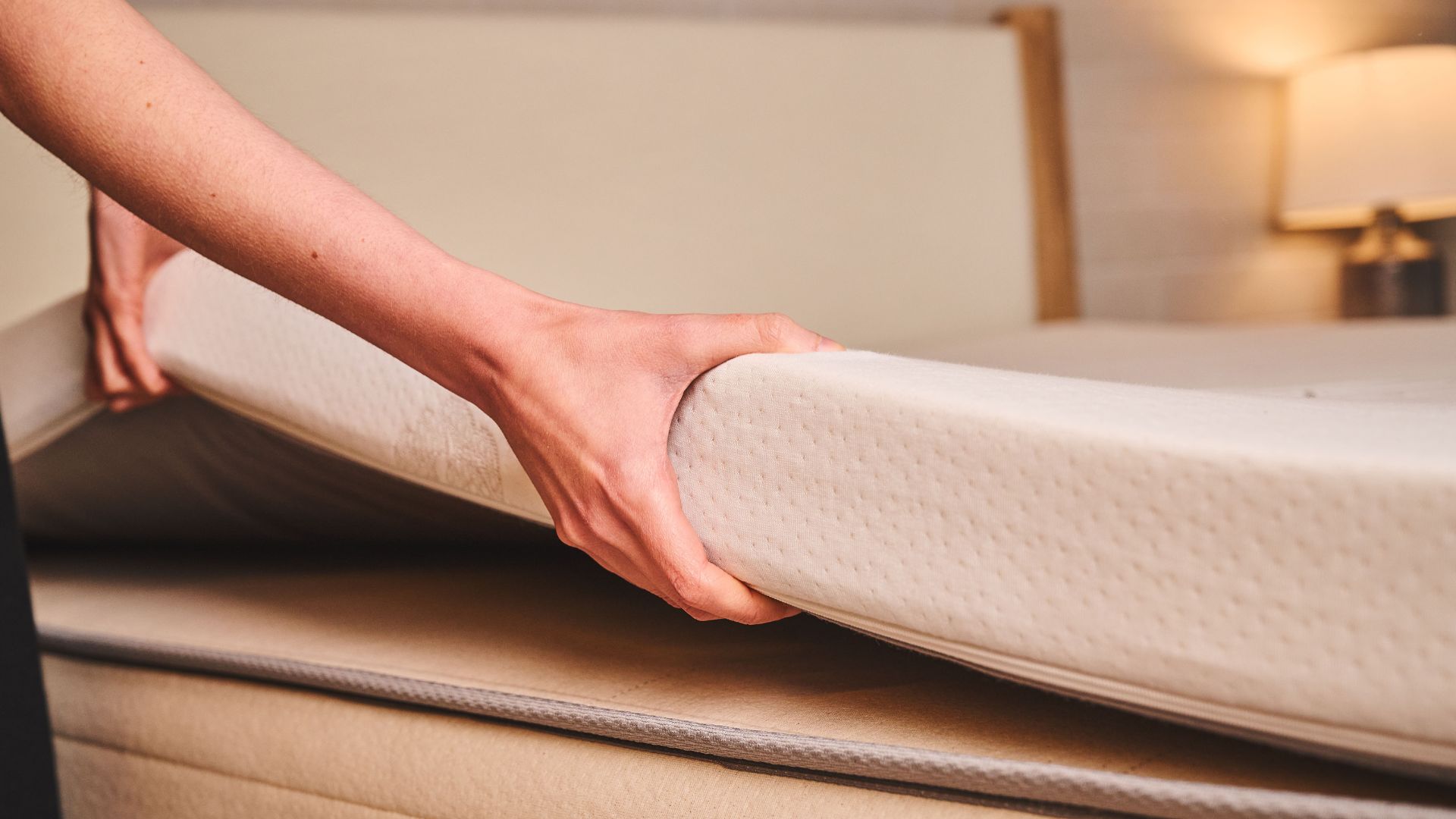
Most mattress toppers are around two to four inches tall, and we don't reccomend going any higher or lower than that. Over four inches will make your bed too squidgy, while anything thinner will make no difference to your bed at all.
While we go into more detail about mattress topper height in our guide to how thick a mattress topper should be, here's a quick breakdown of the most common mattress topper thickness levels and what bed and sleep position they are best for:
Thickness | Best for |
|---|---|
2 inches | Mattresses under 5 year old; high-density foam mattress toppers |
3 inches | Hard mattresses; all sleep positions |
4 inches | Mattresses over 5 years old; side sleepers who need extra plushness |
Of course, there are exceptions. For example, our Saatva Foam Mattress Topper review praised the comfort and pressure relief of the High-Density Foam Mattress Topper from Saatva — despite its 1.5" depth — as it uses high-density foam.
4. Look for specialist features
Many mattress toppers are not only designed to change the firmness of a mattress, but are also designed to fix a certain issue.
The biggest issue that mattress topper designs aim to fix is overheating. Many people experience night sweats or overheating while in bed, which can be due to a range of factors including living in a hot climate or entering the menopause, and this can exacerbated by a mattress that traps heat.
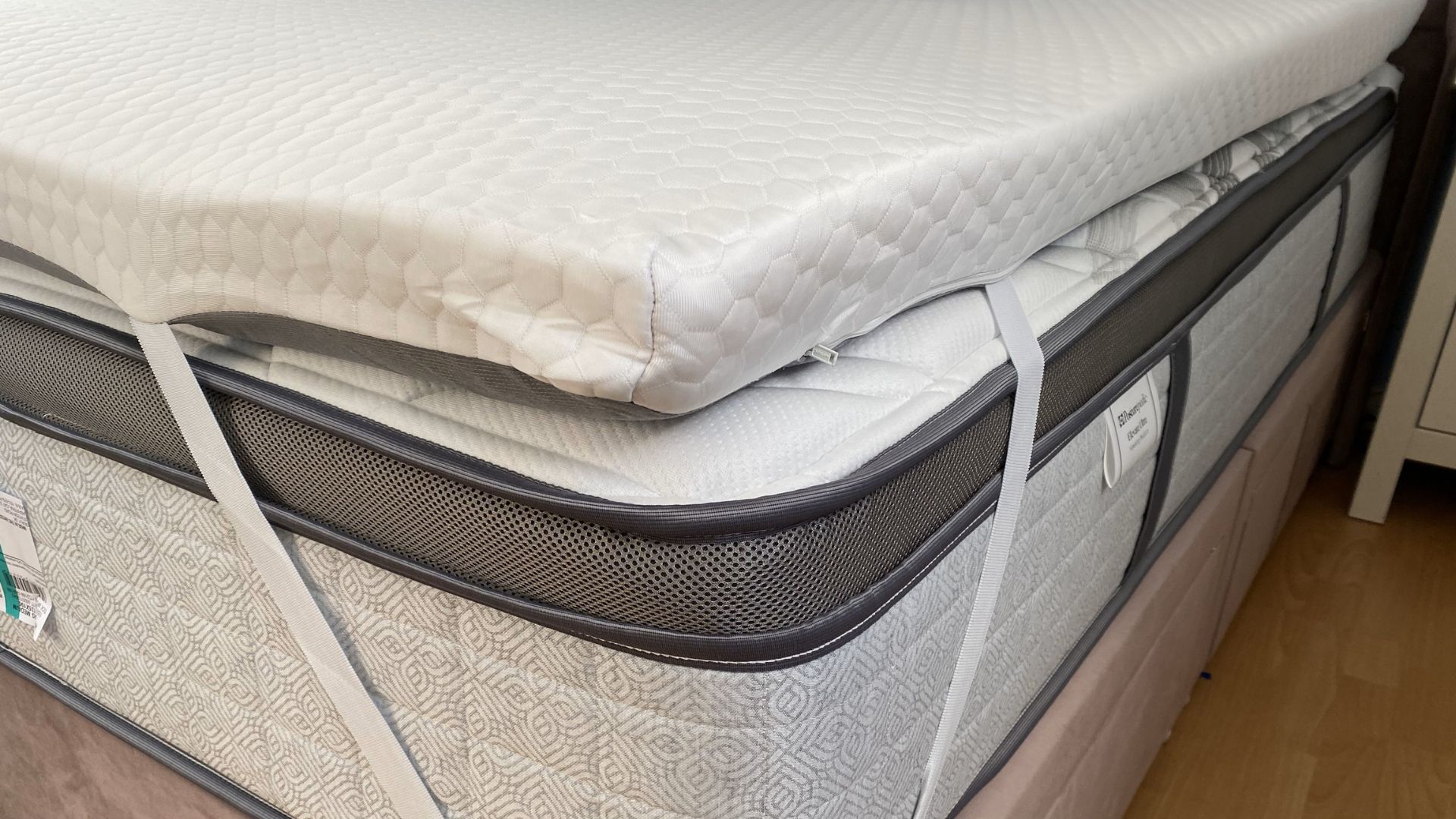
To help ameliorate this issue, many foam toppers are perforated for increased air circulation or infused with cooling gel, copper, or graphite to dissipate heat. Other toppers are made of naturally breathable materials, such as latex or wool, and many come with breathable and moisture-wicking covers.
Meanwhile, restless sleepers can stop their mattress topper from shifting by selecting a bed topper with anchor straps or anti-slip base, and select a mattress topper with good motion isolation if you don't want your partner to be woken up by your tossing and turning.
Allergy sufferers may benefit from a bed topper with a removable and machine-washable cover, a hypoallergenic latex topper, or a mattress topper that's been coated with an antimicrobial treatment to inhibit the growth of bacteria, mold, and mildew.
5. Compare price, deals, and benefits.
Some mattress toppers are never on sale but finally get reduced for holidays such as Memorial Day, Presidents' Day, and Labor Day, while others are always on sale but see a bigger price drop during sales periods such as Cyber Monday. One of my pet peeves are mattress topper deals that are disguised as exclusive Cyber Monday sales but are actually just the standard sale with the banner or promo code changed to reflect Presidents' Day, Cyber Monday etc.
To track mattress topper prices, I tend to use Camel, Camel, Camel and Wayback Machine, plus our very own mattress deals hub. You can also find our mattress sales hubs for individual brands, such as our Saatva mattress sales, Helix mattress sales, and Tempur-Pedic mattress sales.

If you see a mattress topper that you think is perfect for your sleep needs, check to see whether it's being sold at a cheaper price by the brand or another retailer, such as Amazon. (If you're buying from Amazon, please read our guide on how to spot fake reviews.)
Also, check to see what benefits are included with your mattress topper order. Many brands offer warranties, free shipping and returns, and sleep trials with their mattress toppers, which you may not receive if you don't buy the topper directly from the brand's website.
Sometimes, you can get a better discount when buying from a third-party retailer, but you get better benefits if you buy from the brand. Weigh up your options to decide which is more important to you: a cheaper price or the opportunity to try out your topper for a few weeks (or sometimes even months) before deciding if you want to return or not.
What type of mattress topper is best?
The Tempur-Adapt Topper received a high amount of praise in our Tempur-Pedic Tempur-Adapt topper review, and currently ranks No 1 in our best mattress toppers guide thanks to its plush, luxury feel that can soften hard mattresses and soothe joint pain, along with being a great alternative to the best mattress for side sleepers.
Memory foam tends to be the most popular material for mattress toppers because it can soften hard mattresses and are more affordable compared to latex and wool toppers, as well as providing more pressure relief, too.
Remember, a mattress topper that's right for you should be suitable for your sleep position, body type, and budget, along with the ability to help improve any sleep issues you face. To select a mattress topper that meets these needs, you need to choose a topper with the correct height, material, price and deals, design, and firmness.
If you're still unsure, then make sure you choose a topper with a long sleep trial so you can find out if it's the right choice for you risk free.
How to choose a mattress topper: FAQs
How much should I spend on a good mattress topper?
Unless you want the crème de la crème of mattress toppers, you shouldn't have to spend anymore than $500 on a queen-size topper. Many latex mattress toppers are expensive and over $500 for a queen, which is why we always suggest buying premium mattress toppers during sales events.
Here's a look at the typical price of different types of mattress toppers:
Type | Average price (queen) |
|---|---|
Memory foam bed topper | $299 |
Latex mattress topper | $575 |
Cooling mattress topper | $375 |
Budget mattress topper | $55 |
When is the best time to buy a mattress topper?
Some of the best times to buy a mattress topper is during any major holiday sales event, including the Labor Day sales (early September), Presidents' Day sales (February) and Memorial Day sales (late May). However, the best time of year to buy a mattress topper overall is the Black Friday and Cyber Monday mattress sales.
It's important to note that the rock-bottom prices that Black Friday and Cyber Monday deals offer can lead to backorders and shipping delays, so make sure to check the shipping times and viability if you need a mattress topper delivered as soon as possible.
How long do mattress toppers last?
While the quality of a mattress topper (along with how well it's treated) can determine its lifespan, the main thing that influences its life expectancy is its material. Here's a chart to show how long you can expect each type of mattress topper to last for:
Material | Average topper lifespan |
|---|---|
Feather/Down | 1-2 years |
Memory foam | 2-5 years |
Latex | 5-15 years |
Wool | 10 years |
How can I extend the life of a mattress topper?
If you want to make sure your mattress topper lasts, then take care of it by making sure it's clean. You can read our guide on how to clean a mattress topper in five easy steps. Also be sure to check if the cover is removable and machine-washable or non-removable and spot-clean only. Remember to store your mattress topper correctly if you need to transport it or store it away when not in use by reading our guide on how to store a memory foam mattress topper.
You can also increase the lifespan of mattress topper by rotating it every six months. Just rotate it 180 degrees so the part where you rest your head is now at the foot of the bed.
When should you get a new mattress instead of a bed topper?
If you're debating whether to buy a mattress vs mattress topper, I reccomend going for a mattress instead of a bed topper if your bed is over 10 years old, is badly damaged to the point where it's unsupportive, and/or is sagging and has a dip that's over two inches deep. Also unclean mattresses that are infested with mold, mildew and significant stains should be replaced as they may cause or exacerbate allergies.

Frances Daniels is a PPA-accredited journalist and Sleep Staff Writer at Tom's Guide with an MA in Magazine Journalism from Cardiff University. Her role includes covering mattress and sleep news and writing sleep product reviews and buyer's guides, including our Best Hybrid Mattress 2025 guide. She is hugely interested in the relationship between good sleep and overall health, interviewing a wide array of mattress and sleep experts to create well-informed articles about important topics such as nutrition, sleep disorders (from sleep apnea to night terrors), lucid dreaming, sleep hygiene, and mattress care. She is also our specialist on mattress toppers — producing mattress topper reviews and taking care of our Best Mattress Toppers 2025 guide — and takes the lead on all content related to fiberglass-free mattresses for a clean, non-toxic sleep. Outside of Tom's Guide, she has written for Ideal Home, Homes & Gardens, and Marie Claire.
